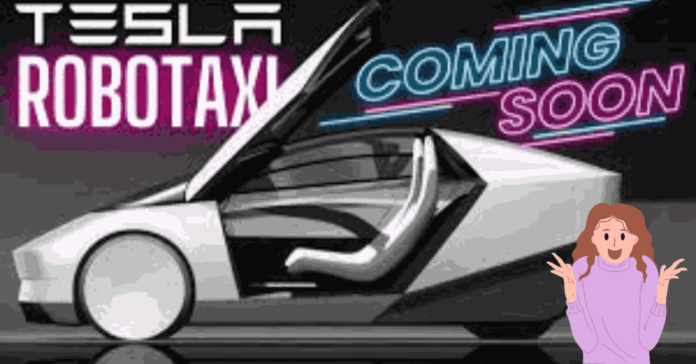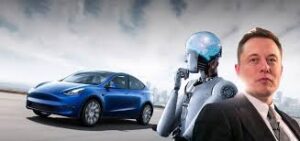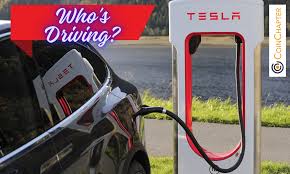Do you know anything about what is Tesla robotaxi, then you can read this article to get some information. Plunge into the realm of autonomous vehicles by Tesla with a future ride service. Probe into its unmatched qualities, predicted effect, and the transport’s future.
With a self-driving electric vehicle that is designated specifically for ride-hailing service as its Robotaxi, Tesla plans to transform the business environment. In contrast to those existing Teslas, this car without a steering wheel and pedals symbolizes Tesla’s high level of autonomous driving technology.
Such attention to self-driving cars admits that Robotaxis will change the presently accepted means of transportation. Picture the future where you can easily order a fully automated Tesla to drive by yourself. This can cut the costs of transportation and maybe more people could enjoy this way of travel. Also check:ChatGPT Without Sign-Ups: Instant Access to AI
What Is Tesla Robotaxi?
The Tesla Robotaxi is poised to revolutionize ride-sharing: it will be the first car that is a self-driving electric car that provides dedicated taxi services. Here’s what sets it apart:
Pakistan are Happier Country Than India, According To UN Report 2024
- No Steering Wheel or Pedals: Unlike traditional cars, the Robotaxi completely gives up manual controls, implying a full leap to Tesla that involves autonomous driving technology. This enables the designing of interiors that are wider and more spacious thus ultimately offering the passenger a more comfortable seating area.
- Autonomous Operation: The Robotaxi currently does not require any human supervision and can move about the roads responding to traffic situations, using its sophisticated sensors and software.
- Revenue Generation: Tesla visualizes a time when the Robotaxis owners can hypothetically make a profit by renting their cars when they are not occupied. This can potentially help car ownership become a passive income source.
- Safety and Efficiency: The self-driving technology brings insight into reducing traffic safety by being the cause of the output of human mistakes and crashes. Also, autonomous vehicles would be provided with route optimization and their traffic flow specialists, which in turn can lead to a better overall public transport operation.
Tesla Robotaxi Development Timeline
Tesla’s autonomous driving aspirations have been the central focus area of its vision for the future, with modifications throughout. Here’s a glimpse into that journey:
- Early Aspirations (2015): Tesla implemented their Autopilot system to provide driver support features such as lane control and highway navigation. This marked the initial step towards self-driving capabilities.
- Focus on Cameras (2016): While competitors explored various sensor technologies like lidar, Tesla strongly bet on camera-based vision systems for its self-driving tech. Some experts still disagree with this, however.
- FSD enters the scene (2020): In addition to unveiling its Full Self-Driving (FSD) software, the company also set a price for it. This marked a significant leap towards full autonomy, but with important disclaimers: drivers are still expected to have full attention and readiness to handle the vehicle.
- Robotaxi Dreams (2022): Tesla announced their idea for a Robotaxi, an autonomous electric vehicle specialized solely for ride-hailing. This vehicle is specifically designed to show Tesla’s devotion to a future where all types of transportation will be fully automated.
- Present Day (2024): The road to accomplishment of Tesla’s plan for autonomous cars is still under development. Elon Musk says that the expected robotaxi release date is 8 Aug 2024.
Challenges and Controversies
Alongside the excitement, some concerns linger among Tesla owners:
- Focus Shift: There is a chance that Tesla may shift the focus from software upgrades and bug fixes of the existing Tesla vehicles to the Robotaxi development. The owners possibly lack attention to their Teslas, because Tesla focusing on this new mission.
- Sensor Suite: The question of whether the Robotaxi will use the same set of sensors (cameras, radar, etc.) as the current Tesla’s full Self-Driving (FSD) suite of sensors remains a concern. If there are any discrepancies observed between the observed case and the simulated case, it could raise questions regarding the reliability of FSD vehicle technology.
- Public Perception: The Robotaxi program has an impact on the public mindset of Tesla’s driverless technology is a good thing. Is the Robotaxi operation going to contribute to trust in Tesla’s autonomous technology or there will be setbacks leading to apprehensions? The public’s perception mostly depends on the safety record of Robotaxi.
Potential Impact
Besides that, the deployment of Robotaxis for mass use can have a crucial influence on many areas of our lives. Here’s a breakdown of some key implications: Here’s a breakdown of some key implications:
Urban Mobility
- Convenience on Demand: Visualize the fleets of self-driving shared vehicles to be available at any time, hence, no need to buy personal cars or taxis traditionally. In this way, availability will be enhanced and traffic jams, especially in urban areas, will be decreased.
- Optimized Traffic Flow: Robotaxis, aimed at fuel efficiency, could effectively manage the routes and halve the number of stops, thereby ensuring that traffic is moving smoothly and, perhaps, reducing the commutation time.
- Parking Revolution: As a result, fewer personal cars would be required which would ultimately lead to a reduction in parking spaces in cities. That would keep the walking areas and green spaces safe on the other hand.
Economic Opportunities
- New Job Market: The Robotaxi business expansion will create new jobs in the field of Robotaxi maintenance, monitoring, and programming.
- Transportation Redefined: Human taxi drivers, ride-sharing drivers, and even truck drivers could face the threat of being replaced with Tesla’s driverless robotaxis, as more Tesla robotaxis are becoming available. This could necessitate retraining programs to equip individuals with new skills for the changing transportation landscape.
- Car Ownership Reconsidered: Robotaxi ownership, with the potential for passive income generation, could become an attractive option for some. This could lead to a shift in car ownership trends.
Environmental Benefits
- Reduced Emissions: An electric robot axis, fueled by clean energy sources, would cut the emissions regarding transportation remarkably, hence contributing to cleaner air and a relatively small environmental footprint.
- Traffic Flow Optimization: As mentioned earlier, Robotaxis programmed for efficiency could lead to smoother traffic flow, potentially reducing idling times and overall emissions.
- Smarter Infrastructure: The large-scale Robotaxi system might motivate producers of smarter infrastructure, such as the right-of-way lanes or charging stations, for increased resource utilization.
One must remember that those are potential consequences and that the real influence of Robotaxis will be determined by factors such as legislative frameworks, public perception, and the development of the technology.
Conclusion
The Tesla Robotaxi is one of the futuristic cars leading the self-driving ride-hailing industry to a whole new level. Despite the remaining obstacles such as bad environment and laws, the advantages of urban mobility, economic benefits, and environmental protection are enormous. Through the evolution of its technology and rerouting of new hurdles, Robotaxis can very well redesign the transport environment itself.
FAQS
What is Robotaxi Tesla?
Tesla Robotaxi is an autonomous electric vehicle. These cars wouldn’t have a steering wheel or pedals as these are driverless cars of the future. The owners of the car might make a financial income by renting it out. By providing efficient, ‘on-demand’ trips, this project aims to change transportation and make it safe and convenient.
Can Tesla drive themselves?
To date, Tesla has equipped its cars with features like Autopilot. This is a great feature that helps in driving however a driver is obliged to be attentive and successively take over the steering wheel. It will become fully autonomous in the future.
What technology does Tesla use for self-driving cars?
This autopilot system uses cameras to interact. It captures images that feed into powerful processors, allowing the vehicle to navigate. While some competitors use lidar (laser imaging), Tesla focuses on camera vision for its Autopilot and future Robotaxi.






